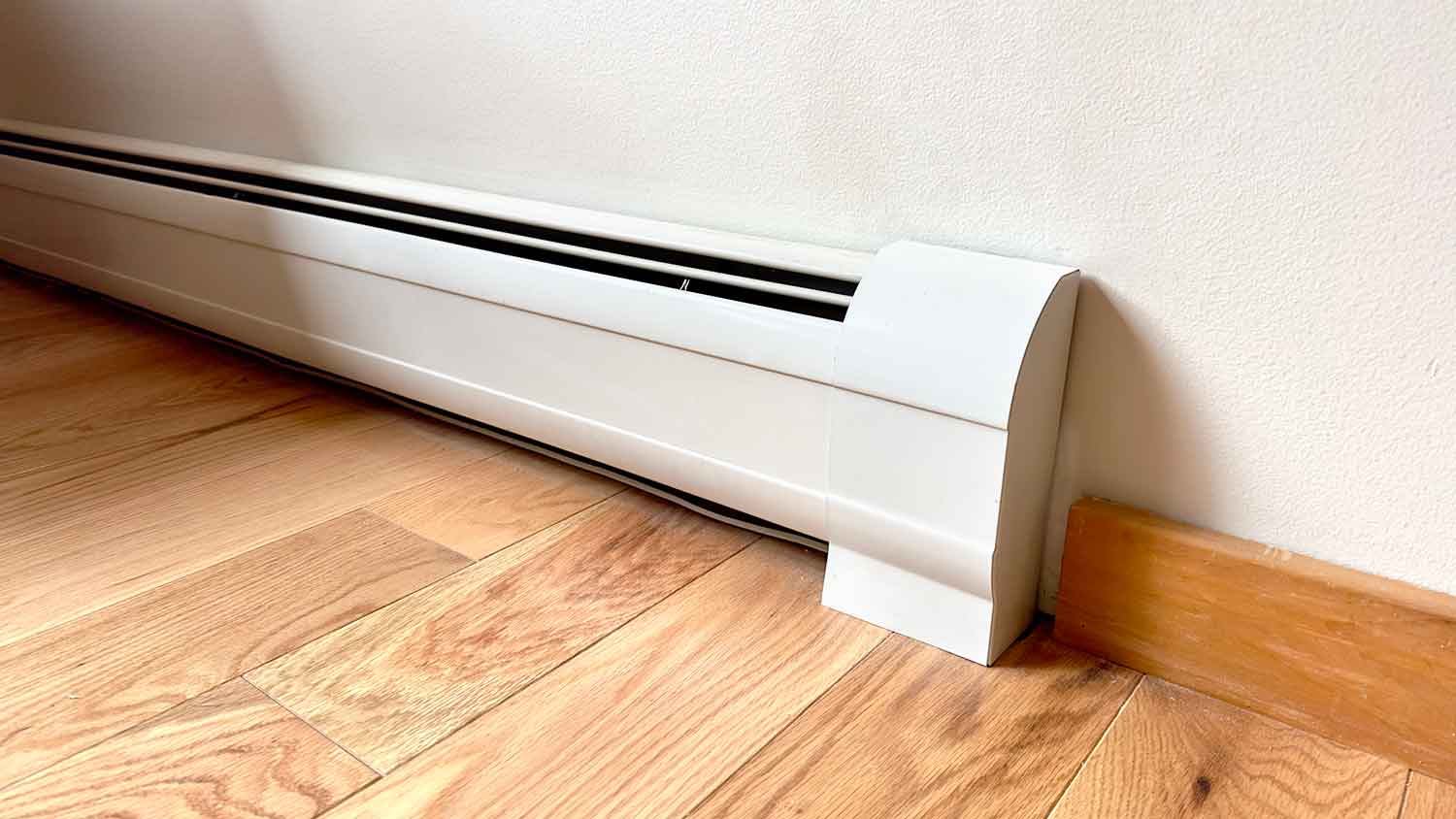Can You Put Furniture in Front of Baseboard Heating?
Don’t let your furniture throw shade on your baseboard heaters


Place furniture and draperies 6 to 12 inches away from baseboard heaters.
Baseboard heaters are generally safe, if they are maintained properly and used correctly.
Placing furniture too close to baseboard heating can be a fire hazard and damage the heating system.
Obstructions near a baseboard heater can also cause it to run less efficiently.
Placing furniture in front of baseboard heating can impact both heat distribution and, more importantly, household safety. Maintaining proper clearance from a baseboard heater is essential for your family’s comfort and well-being. Let’s cover what you need to know to keep your space warm and your baseboard set-up safe.

Why You Can’t Put Furniture in Front of Baseboard Heating

There are several reasons why you shouldn’t place furniture too close to a baseboard heater.
Fire Hazard
Pieces of furniture and other objects increase the risk of fire when they’re placed too close to a baseboard heater. You should place all objects, including fabrics, cushions, or wooden items, 6 to 12 inches away from the heaters. These can easily catch fire when exposed to sustained heat.
Damage to the Furniture
Prolonged exposure to heat can cause furniture materials to warp, crack, or discolor. Wood, fabric, and other materials may suffer damage from the direct heat.
Reduced Efficiency
When a heater's airflow is blocked, it has to work harder to maintain the desired temperature, leading to increased energy consumption and higher heating costs each month.
Reduced Comfort
An obstructed baseboard heater that can't effectively warm a room can result in cold spots and a less comfortable living space.
How Far Should Furniture Remain from Baseboard Heating?
Furniture pieces should stay at least 6 inches away from a baseboard heater. This distance allows air to properly circulate around the heater and lowers risk of fire and damage to the item. If a furniture piece must be close to a baseboard heater (for example, if the room is too small to accommodate the distance) consider purchasing heat-resistant stands or pans to lift the piece from the floor and create the necessary distance.
Frequently Asked Questions
Baseboard heaters are safe and efficient, but they can be dangerous if you don’t follow safety precautions. Aside from furniture, other items should not be too close or block the flow of heat. Check around the heaters often to make sure items haven’t fallen on top of or under them, and when there’s an issue with a baseboard heater, always contact an electrician or HVAC professional to do the repairs.
Baseboard heaters are safe unattended, if they were installed correctly, maintained well and keep away from flammable materials. If you have children or pets with electric baseboard heaters, make sure to keep them a distance away as well, as they are hotter to the touch than other types of baseboard heaters.
While some homeowners want curtains to camouflage their baseboard heaters, like furniture, they should be a distance away, as they are also a fire hazard. Shorter curtains should be about 8 inches away from the heater's top. Drapes should have at least a 1-inch clearance from the floor covering’s top (and the ceiling) for proper air circulation.





- Furnace Repair
- Air Conditioning Repair
- HVAC Repairs
- Furnace Installation
- Wood & Pellet Stove Repair
- Dehumidifier & Humidifier Repair
- Heat Pump Companies
- Swamp Cooler Repair
- Wood Stove Services
- HVAC Companies
- Commercial A/C Repair
- Geothermal Installation
- Air Conditioning Installation
- Boiler Repair
- 24 Hour Furnace Repair
- Geothermal Repair
- Heat Pump Repair
- Humidifier Installation
- Thermostat Repair
- Thermostat Installation
- Nest Installation
- Heating & Cooling
- Heating Repair
- Furnace Cleaning
- Furnace Tune-Up
- HVAC Technicians
- Subcontractors
- Furnace Maintenance
- Plumbing & Heating Companies
- Wood Stove Inspection
- Mini Split Installation
- Wall Heater Repair
- Duct Installers
- How to Turn On Baseboard Heaters: 8 Tips for Running Your Baseboard Heater
- Baseboard Heater Not Working? 8 Common Issues and Solutions
- Is Baseboard Heat Gas or Electric?
- Baseboard Heater vs. Space Heater: Which is the Better Option?
- How to Replace Baseboard Heater Covers
- Electric Hydronic vs. Electric Baseboard Heater: Which Is Better?
- Water Heater Inspection Checklists: What You Should Know
- 6 Signs Of Water Heater Failure
- How to Size a Water Heater
- How to Fix Water Damage on Baseboards










